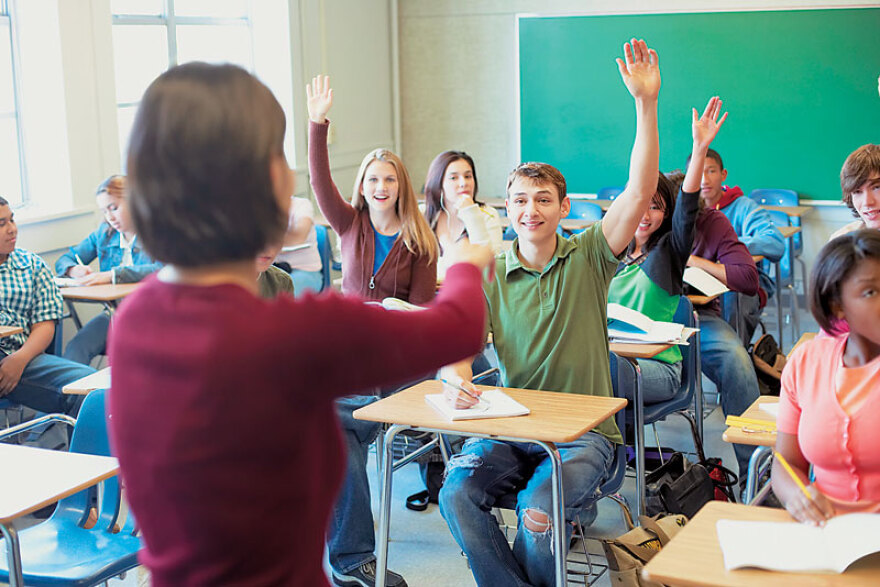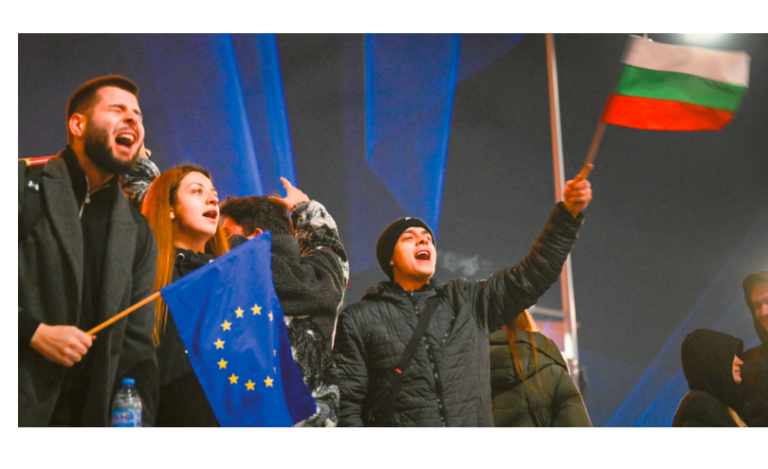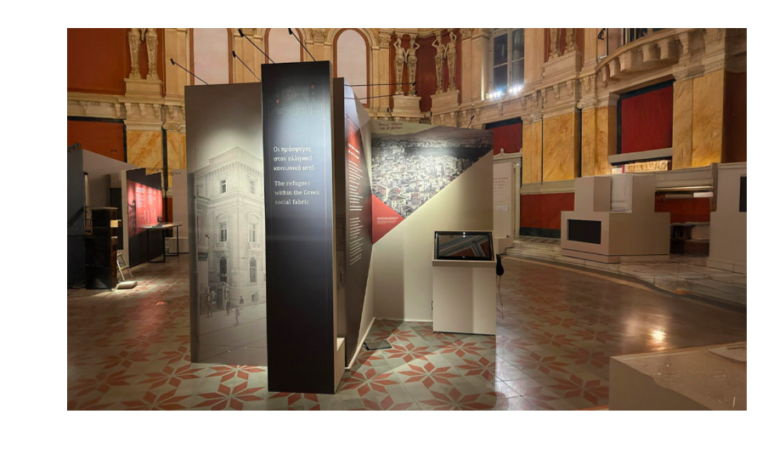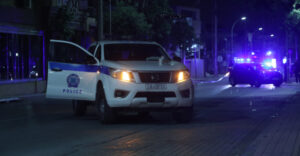In the international PISA competition, not only in performance but also in students’ creative thinking, Greece ranks among the lowest performing countries among OECD countries: 38th out of 64 countries. Greek children generate original ideas, but lag behind in solving scientific problems.
The OECD’s announcement points the way to the changes that will be adopted from the next school year. It should be noted that the results are part of the PISA 2022 survey and follow on from the similar announcements that preceded it for Mathematics, Science and Reading Comprehension.
The survey
The main PISA 2022 survey involved approximately 690,000 students from 81 countries (38 OECD member countries and 43 additional countries) representing approximately 29 million 15-year-old students. Of these countries, 64 participated in the creative thinking domain and 74 countries collected data on the extent to which this skill is fostered in their education system through questionnaires to students, teachers and school principals. Greece was represented in the main survey by 6,578 students born in 2006, from 242 secondary schools (Gymnasiums, General Lyceums and EPALs) across the country.
Creative Thinking is defined in research as the ability of an individual to devise, evaluate and improve ideas, which may result in original and effective solutions, the production of new knowledge and a fruitful expression of imagination.
As part of the assessment, students were asked to express their creative thinking in four areas:
Expression through written language, such as generating an idea for a story inspired by a title or theme.
Expression through visual language using special software, such as creating a logo for an organization
Social problem solving, such as coming up with ideas to solve social problems – for example, reducing traffic on the streets of a big city or improving disabled access to a public space
Solving open-ended scientific problems, such as providing possible explanations for a phenomenon and evaluating experimental designs
In particular, students’ ability to generate diverse ideas was assessed, i.e. the ability to come up with as many different ideas related to a topic as possible. To generate creative and original ideas, i.e. the ability to devise ideas or approaches that are not usual or conventional. Evaluate and improve ideas, i.e. the ability to evaluate given ideas and improve or develop them in ways that are not considered conventional.
However, in addition to the performance in the field of Creative Thinking, through the completion of questionnaires by the students and the principals of the sampled schools, data were collected on individual student data, i.e. attitudes, opinions and socio-emotional characteristics, as well as data concerning the school context, such as opinions, pedagogical practices, actions, activities, use of digital technologies, which are likely to influence their performance in the field of Creative Thinking.
What is the level of creative thinking of 15-year-old students in OECD countries and Greece – The results of the survey
With a score of 60, the countries with the highest level of creative thinking are, in descending order, Singapore (41), Korea (38), Canada (38), Australia (37), New Zealand (36), Estonia (36), Finland (36), Denmark (35), Latvia (35), Belgium (35), Poland (34) and Portugal (34). These are the countries that also achieve high performance in the core subjects tested in the PISA survey, namely Mathematics, Reading Comprehension, and Science.
They are the countries that achieve high performance in the core subjects tested in the PISA survey, namely Mathematics, Reading Comprehension, and Science.
Greece ranks in the group of countries that perform below the average performance of OECD countries in terms of students’ creative thinking. Based on this performance, Greece ranks 38th among the 64 participating countries, with a performance of 27 points compared to the OECD average of 33 points.
Students with very good or very low performance in the core subjects perform equally well in Creative Thinking. Students with moderate performance in the core items, however, may excel in Creative Thinking, indicating that this corresponds to skills not necessarily covered by the PISA core items.
In general, students at OECD level were better at creative expression – written and visual – than problem solving, whether social or scientific. In Greece, students excelled relatively more in generating original ideas and visual expression, while they lagged behind in solving scientific problems.
How students’ performance varies according to their social characteristics
In Greece, differences in Creative Thinking performance related to gender, social background or type of school are similar or smaller than those in the OECD.
In both Greece and the OECD, girls, students with higher socio-economic backgrounds, students in schools with a higher socio-economic profile, students who do not have a migrant background, students in urban areas and those attending general high schools achieve higher performance in Creative Thinking.
In all OECD countries and in Greece, the effect of socio-economic background on Creative Thinking is smaller than that on the PISA core items.
Students’ views on creativity – How they differ according to their characteristics and how they affect their performance
On average in OECD countries, and in Greece to a somewhat lesser extent, most students believe that they can be creative in every subject, not only in art. This belief is more prevalent among girls, students from advantaged socio-economic backgrounds and students in schools with a higher socio-economic profile. Students with similar beliefs perform better.
Around half of students at OECD level believe they can improve their creativity, while 6 in 10 think the same about their intelligence. In contrast, in Greece, students in the majority do not adopt the perception that they can improve these attributes – only 4 in 10 adopt this perception. Also, in Greece, this perception is not influenced by students’ social background, whereas in the OECD, girls and students from advantaged backgrounds are more likely to adopt the perception that they have the potential to improve both their creativity and their intelligence. The perception of being able to improve both creativity and intelligence (growth mindset) is positively associated with student achievement.
Pupils at OECD level show high levels of creative self-efficacy, receptivity to challenge, receptivity to art and new experiences, imagination and a willingness to adventure. Students in Greece scored higher levels on these attitudes and characteristics than the OECD average. These attitudes positively influence performance in Creative Thinking but explain little of the variation in related performance. These attitudes are more strongly manifested in broader creative challenges than in school activities, such as solving difficult school problems, engaging in creative activities in the context of school work. In all countries, girls, students from higher social strata and those attending schools with a higher socio-economic profile are more likely to display these attitudes.
What are the socio-emotional characteristics of students relevant to creativity, how they differ and how they affect their performance
The characteristics, which were examined, include curiosity, perseverance, goal orientation, ability to adopt alternative perspectives, confidence to be exposed to new experiences, cooperativeness, stress tolerance and emotion control.
Students at the OECD level demonstrate these characteristics more in broader creative challenges than in school activities. Boys, students from privileged backgrounds and schools with a higher socio-economic profile show higher levels of these traits.
Students in Greece report higher levels of curiosity, perseverance, goal orientation, adoption of alternative perspectives and confidence in new experiences than the OECD average, but experience greater difficulties in managing anxiety and controlling their emotions.
The characteristics that positively influence creative thinking are curiosity, perseverance, goal orientation, adoption of alternative perspectives and confidence regarding participation in new experiences.
What are students’ educational and creativity-related career aspirations – How these are influenced by their characteristics –
How do they affect their performance
Students in Greece have significantly higher educational aspirations than students in the OECD particularly in terms of those who state that they expect to study at postgraduate or even doctoral level in the future (43.9% in the OECD vs. 60.1% in Greece).
.
At the professional level, a smaller proportion of students – 5.2% compared to 6.1% in the OECD – intend to work in the cultural or creative sector in the future. Girls and students from higher socio-economic backgrounds have a higher ambition to work in the respective sectors.
Both high educational aspirations and ambition to work in the cultural or creative sector have a positive impact on performance in creative thinking.
Principals’ views and current school practices that influence creative thinking performance
The perception that there are multiple ways for an individual to be creative and that this can be expressed in any subject is widespread among school principals in all countries, regardless of school type. Principals consider that their students are creative and enjoy creative projects. However, in Greece, principals are more cautious in their assessments regarding whether their students are creative and enjoy creative projects compared to the OECD average.
In OECD countries, students report that teachers are implementing practices that foster creativity. In Greece, however, these practices are less implemented, with the country performing comparatively lower on this parameter.
Both in the other OECD countries and in Greece, girls, private school students and those from higher socio-economic backgrounds report that their teachers apply more creative practices. Students attending general education schools report less creative practices than those attending technical-vocational schools. Also, students who experience more creative pedagogical practices in their schools perform slightly better in creative thinking.
According to principals, fewer creative activities are offered in Greece than the OECD average, but students participate more when they are offered.
Students in Greece participate more than other OECD countries in extracurricular creative activities, especially boys, and students in public schools and EPALs. However, this participation does not seem to affect creative thinking.
.
Finally, students in Greek schools use digital technologies less for learning purposes at school, but their use, in and out of school, has a positive effect on creative thinking, especially when used for recreation outside of school. However, use for recreational purposes within school has a negative effect.
The key challenges, highlighted by the OECD’s research on students’ creative thinking
According to the views of the educational authorities of the countries participating in the PISA 2022 survey, the main challenges, which act as the most significant barriers to the development of students’ creative thinking, are overloaded curricula, lack of assessment of this skill, lack of pedagogical training and resources for its cultivation. The lack of appropriate infrastructure, equipment and materials, the lack of specifications at the level of curricula, which describe through specific expected learning outcomes the development that this skill should have depending on the age group of students.

The policies adopted by the Ministry of Education and Science and the IEP for the promotion of creative thinking among students in Greece
Based on the above observations and the results for Greece, the Ministry of National Defence in collaboration with the IEP is launching a set of policies aimed at promoting creative thinking among students, with implementation starting in the school year 2024-2025.
Specifically, this package of policies includes the introduction of horizontal actions at the level of the Curricula, which enhance creative thinking. In this context, a significant contribution is expected to be made by the Literary Reading Programme, i.e. the reading and analysis that will accompany literary books, which will be distributed free of charge to every pupil in all classes of primary and secondary education, and the Active Citizen Actions Programme, which focuses on engaging pupils with contemporary social problems.
In addition, the strengthening of relevant actions in the framework of the Skills Workshops. Further promotion of the thematic unit “Creating and Innovating” in all classes where Skills Workshops are implemented. This theme aims precisely at fostering creative thinking and initiative through STEM/Robotics, Entrepreneurship, etc. actions. The use of digital media in design and the use of creative ideas and solutions especially in art classes. The development of a Topic Bank in the logic of the PISA survey questions and philosophy. The incorporation in teachers’ guides for all subjects and especially in the core subjects examined by the PISA survey (reading comprehension, mathematics, science) of activities such as the exploration of open-ended problems, the identification of alternative solutions and ideas, the answering of questions such as “what would happen if….”, “how would you deal with …”, methods for evaluating creative activities, etc.
In addition to the aforementioned, an extensive training programme for teachers in pedagogical and teaching practices that enhance students’ creative thinking is planned to support this. A corresponding training program for education officials, especially school counselors and school principals, to encourage relevant practices in the schools under their responsibility; and
a repository of learning resources and indicative lesson scenarios from which teachers at all levels and in all subjects can draw ideas for similar activities.
Also, the completion of the installation of 36,000 interactive whiteboards in every classroom from the 5th grade to the 3rd grade within 2024, in order to make education more creative , as students through the latest technological tools, can have multiple sources of learning.
To reduce rote memorization and develop critical thinking , through multiple textbooks. Teachers will be able to choose the textbook they want from among the approved books included in the Textbook Registry (TBR). At the same time all approved books will be available in a digital library so that students can combine resources.
The emphasis on the individual evaluation procedures of teachers and those of the school unit’s self-evaluation on criteria related to the implementation of pedagogical practices – exploratory learning, open-ended problem solving, projects – and the implementation of actions (groups, a variety of in-school activities in which students are actively involved) that enhance creative thinking.
Variety of activities, including various types of activities, which encourage the development of active learning.
The inclusion in all examinations – in-school, promotional, graduation – of at least one subject that tests creative thinking.
Ask me anything
Explore related questions





